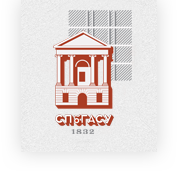CIS Strategy and Research on the Promotion of "Millennium Salt Capital" Culture
DOI:
https://doi.org/10.63313/LLCS.2002Keywords:
CIS Strategic Cultural Tourism Integration, Cultural BrandAbstract
Brand is the carrier of culture, and the process of marketing is to disseminate all the information of the brand to consumers in a resource-optimized way, so as to realize the change of their cognitive structure and behavioral attitude. Brand promotion refers to a series of activities and processes in which an enterprise (brand) shapes its own and product image and is widely recognized by consumers. Generally speaking, a successful and complete brand promotion should include three stages: the first is the promotion stage of brand width, that is, the establishment of brand awareness; The second is the stage of in-depth brand promotion, that is, to enhance the reputation of the brand; The third is the maintenance stage of the brand to enhance the characteristics of the brand. As a demonstration area for the transformation of old industrial cities in China, Zigong should learn from the CIS strategy [CIS abbreviated as CI, the full name is Corporate Identity System, translated as Enterprise Identity System, which is translated as "corporate image unified strategy". Since the mid-fifties of the twentieth century, IBM was the first company in the United States to use this differentiated strategy to win the market, CIS has swept the world for half a century, and has been widely adopted by international enterprises in Europe, America, Japan and South Korea, and has become a modern business strategy for creating an international famous brand. It includes mind identity (MI), behavior identity (BI), and visual identity (VI). Give full play to its own advantages in historical and cultural resources, promote the integrated development of culture and tourism, polish the golden signboard of the national cultural export base, and provide a fresh "Zigong model" for the transformation of China's old industrial cities.
References
[1] Ping Literature and Art. Theoretical and empirical research on the development of cultural tourism in Sichuan[M]. Chengdu:Bashu Publishing House,2007.
[2] Wang Renxiang, Zhang Renyan. Salt and Civilization [M]. Shenyang: Liaoning People's Pub-lishing House, 2007.
[3] Wu Yi, more than one wood. Song Yuren - The Hidden Legend [M]. Chengdu: Sichuan Liter-ature and Art Publishing House, 2013.
[4] Peng Kui. Research on the countermeasures of Zigong to build a regional cultural high-land[J].2011(34):302-304.
[5] Zhou Shu. The "cultural boat" of Yandu floated across the ocean.http://zgm.cn/html/a/2015-04-08.
[6] Zhang Zan. How to help the new scene of cultural tourism in the era of "cultural creativity +" [J]. People's Forum, 2019(26): 68.
[7] Lai Bin, Yang Lijuan. Research on Market Value Mining and In-depth Development of Salt Culture Theme Tourism Products: A Case Study of the British Dead Sea and Zigong Salt Capital[J]. Human Geography,2009,24(01):88.
[8] Xiang Yong. Creative Tourism: The Integration of Culture and Tourism from the Perspec-tive of Local Revitalization[J]. People's Forum Academic Frontiers, 2019(11):64.
[9] Cheng Longgang. Proceedings of the National Symposium on the Development and Protec-tion of Salt Cultural Heritage[C]. Yangzhou,2011:147-149.
[10] Yuan Tingdong. Bashu Culture[M]. Chengdu:Bashu Publishing House.2009:22-24.
[11] Feng Yueji, Li Jing. Building National Cultural Symbols: The Value Construction of Tradi-tional Chinese Cultural IP from the Perspective of Culture[J]. China Editor,2019.9:33-34.
[12] Zhao Kui. Chuanyan Ancient Road under the dust of history [M]. Shanghai: Oriental Pub-lishing Center, 2016.
[13] Song Liangxi. Salt and Food Culture in China[J]. Research on the History of Salt Indus-try,1996,1:26-33.
[14] Zeng Fanying. Connotation and characteristics of salt culture[J]. Sichuan Institute of Tech-nology,2006,1:47-52.
[15] Wang Zijin. Historical information of salt industry in Sichuan bamboo branches[J]. Re-search on the History of Salt Industry,2004,4:32-35.
Downloads
Published
Issue
Section
License
Copyright (c) 2025 by author(s) and Erytis Publishing Limited.

This work is licensed under a Creative Commons Attribution-ShareAlike 4.0 International License.















